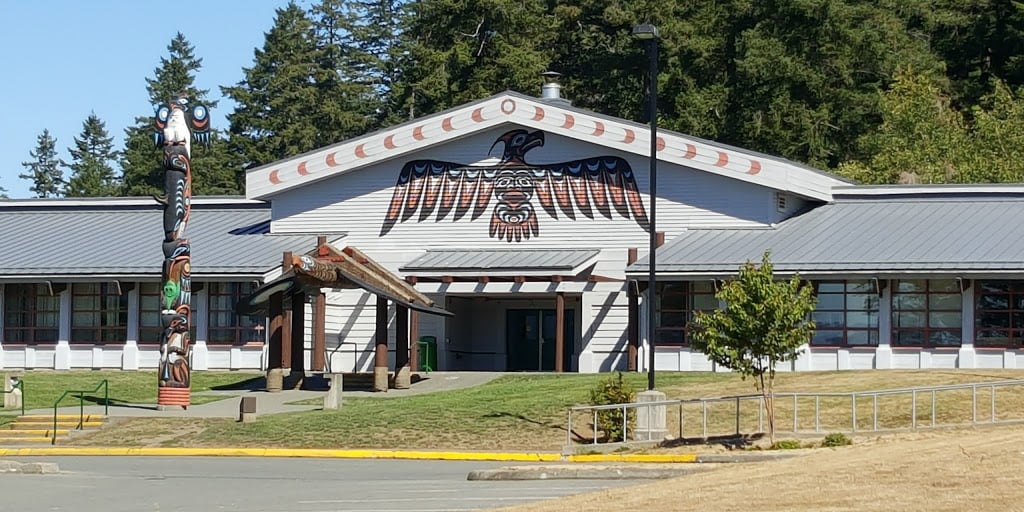Culturally Inclusive Schools - Why it’s Important
ȽÁU, WELṈEW̱ Tribal School This is the first in a two-part series on culturally inclusive schools. Here we look at why some believe it’s...
3 min read
Admin October 23, 2012

Kelly J. Lendsay, President & CEO, Aboriginal Human Resource Council, is a social entrepreneur who is internationally recognized as one of Canada’s foremost innovators of Aboriginal inclusion. His career has been a series of catalytic flashpoints demonstrating that with effective networks, corporate and community goals can translate smoothly into advancing educational, employment, and economic opportunities for Aboriginal people.

Kelly was the founding president and CEO of the council, formed in 1998 as a national not-for-profit organization. Today, under Kelly’s leadership, the council is a thriving social enterprise with a mandate to advance the full participation in the economy of Aboriginal Peoples in Canada and Indigenous Peoples around the world.
Kelly leads the design of partnerships, products, services and networks that help organizations understand the value of inclusion and advance inclusion workplace strategies at the local, regional, national and international levels. His team helps organizations build workplaces of inclusion that position them as employers-of-choice for Aboriginal talent. The council also helps members of the Aboriginal community obtain essential skills, design career paths and connect to employers.
We recently sat down and spoke to Kelly about workplace inclusion and here’s what he had to tell us…
What advantages will Canada and Canadians gain if more private sector companies were to employ Aboriginal workers and create environments that are welcoming and respectful?
“If Aboriginal people are educated and employed at the same rate as non-Aboriginal people in Canada our GDP would go up by $401 billion. We would also have lower taxes, a lower rate of incarceration and less social support programs, etc. Whether or not you are supportive of Aboriginal issues or not -- in simple terms, this is the business case for Aboriginal inclusion.
Canada prides itself in being a #1 country to live in and that means creating inclusive workplaces and communities for everyone. You can’t have economic inclusion without social inclusion. The business sector has the opportunity to take a great leadership role in closing the economic gap; government is working towards closing the social gap.”
How will the recent cutbacks to Aboriginal communities and organizations affect progress being made for Aboriginal people and communities to achieve an equal standard of living?
The government is cutting back on the exact services we need to create the framework and foundation to achieve economic success. Social support programs that provide people with career education are the frameworks - you need those programs to mobilize people into the world of careers, and then into the world of employment. The cutbacks in the short-term will cause financial hardship, but in the long-term, the effects will bring us full-circle. The very programs that are being cut are critically needed to integrate people into the workforce.
Are you saying rather than cut back, the government should increase funding for social support programs?
We are talking about issues and challenges that are over a hundred years old and have become generational challenges of racism, residential schools and unemployment, which frequently leads to additional issues of substance abuse and incarceration. So yes, if anything, you can argue that we need a re-investment or enhancement for a decade so that we can overcome some of these issues and barriers, and then, and only then, we would move beyond the need for these support programs. When employment rate is within five percent of the Canadian average, then introduce the cutbacks. Set some very logical targets around economics, GDP and employment, but until that time, why would we cut back on the very foundation pieces that actually encourage successful social and economic integration?
Does the government have a responsibility to assist or encourage companies to recruit and retain Aboriginal workers?
Definitely. For government there are taxes to be earned - if people are working then they are paying taxes. It’s better business sense to be earning taxes than it is to be paying out to support social assistance programs, incarceration facilities and some of the other dismal aspects of the challenges that we have.
But, the bigger issue is that we need people. Canada is a small country. If you look at the world in terms of global economic power we are very tiny. We are going to need every Canadian educated, employed, skilled and re-skilled over and over again in order to be productive. Every sector today sees a human resource crisis ahead. Aboriginal people are the workforce solution and once that happens, then they become consumers and drivers behind housing sales, car sales and all the same things that keep economies and communities going. And then there is the point of civic duty - they will participate in the larger political fabric of building a great country.
Featured photo: Unsplash

ȽÁU, WELṈEW̱ Tribal School This is the first in a two-part series on culturally inclusive schools. Here we look at why some believe it’s...

One of the challenges to retaining Indigenous employees is that many work sites are not inclusive environments. Creating a working environment that...

The minds and hearts of most Canadians are opening to the severity of colonial practices that helped shape this country and how those policies...